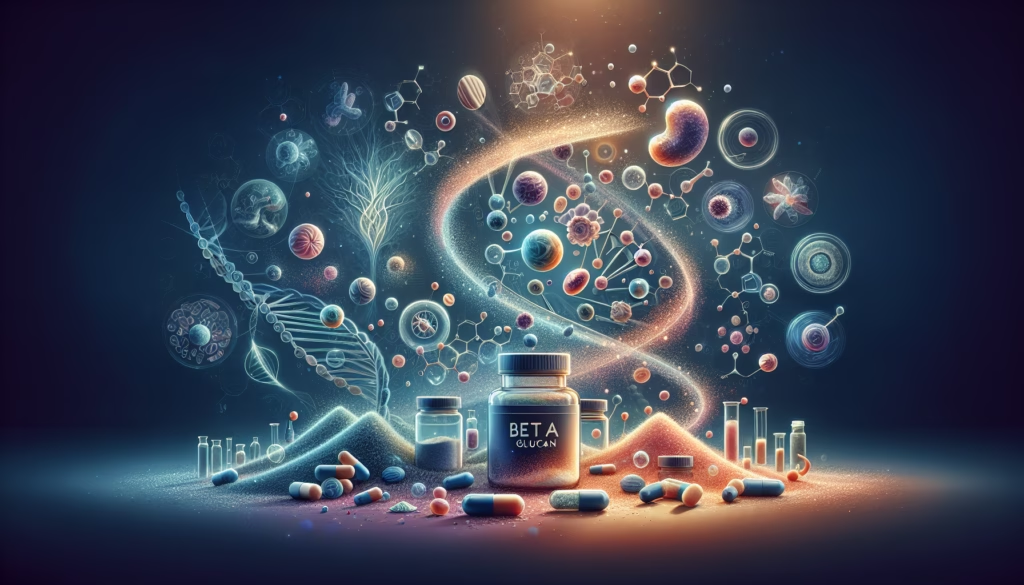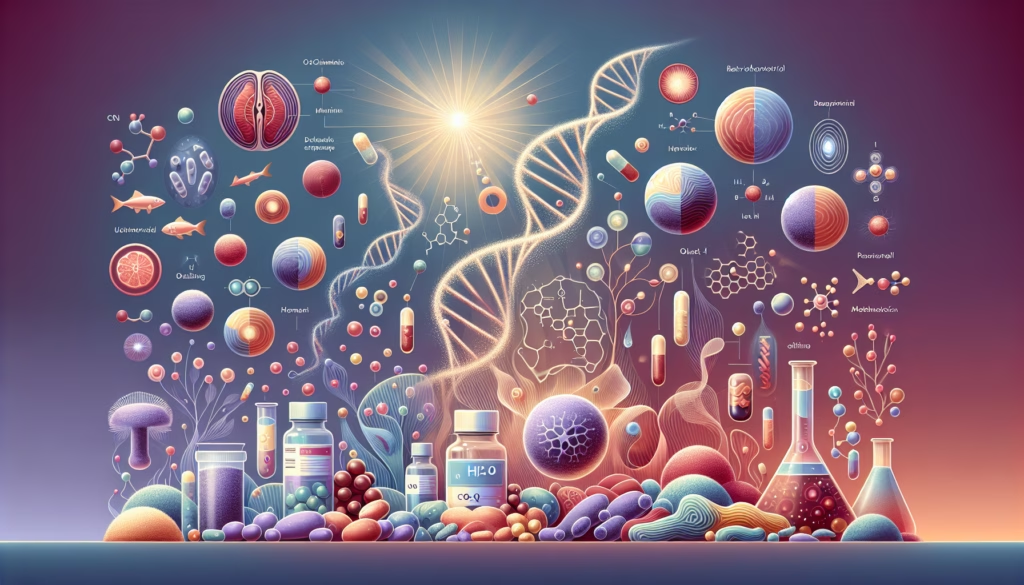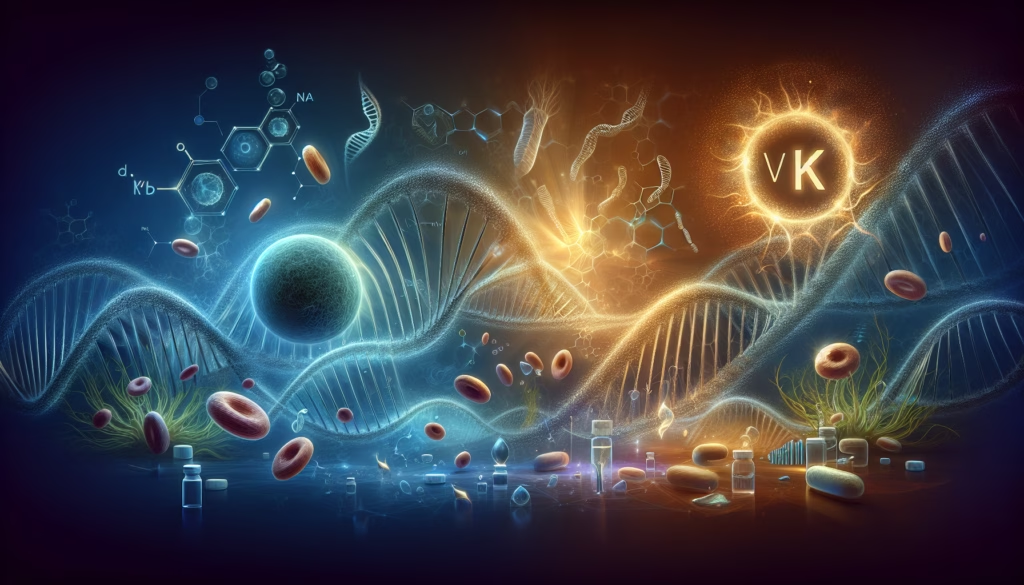
Beta Glucan
Discover the science-backed potential of beta glucan as an adjunct in cancer therapy. This post delves into the latest research
Click 
Genistein, a naturally occurring isoflavone found in soy products, has emerged as a promising compound in cancer research due to its multi-targeted mechanisms against tumour growth, metastasis, and therapy resistance. Below is a detailed exploration of its anti-cancer properties, supported by preclinical and epidemiological evidence.
1. Apoptosis Induction
Genistein activates intrinsic and extrinsic apoptotic pathways by:
Modulating Bcl-2/Bax protein ratios to favour cell death9
Enhancing endoplasmic reticulum (ER) stress, triggering calpain-mediated apoptosis79
2. Cell Cycle Arrest
Induces S-phase or G2/M-phase arrest in cervical (HeLa, ME-180) and breast cancer cells48
Suppresses cyclin B1, CDK1, and cdc2 phosphorylation4
3. Angiogenesis & Metastasis Suppression
Inhibits VEGF, HIF-1α, and NF-κB pathways, reducing tumour blood vessel formation711
Downregulates FAK/paxillin signalling, impairing cell adhesion and migration412
Blocks MMP-9 synthesis and EMT (epithelial-mesenchymal transition) proteins712
4. Epigenetic Modulation
Reactivates tumour suppressor genes (e.g., RARβ2) by reversing DNA methylation34
Enhances miR-34a expression to suppress Notch1/NF-κB signaling12
Genistein enhances the efficacy of chemotherapy and radiotherapy:
Cisplatin: Potentiates apoptosis in ovarian and glioblastoma cells210
TRAIL: Overcomes resistance in gastric/pancreatic cancers2
Radiation: Improves radiosensitivity in prostate and cervical cancers210
Low-dose combinations with chemotherapeutics show synergistic effects in breast cancer models5
| Cancer Type | Observed Effects |
|---|---|
| Ovarian | ER-β activation, PTK inhibition12 |
| Breast | CIP2A suppression, PPARγ pathway activation89 |
| Cervical | RARβ2 demethylation, FAK/paxillin inhibition4 |
| Prostate | Osteoprotegerin/RANK/MMP-9 axis modulation2 |
| Lung | PI3K/AKT/HIF-1α and NF-κB/COX-2 inhibition11 |
Reduces IL-6, IL-8, and TNF-α secretion9
While epidemiological studies link high soy intake to reduced cancer risk16, clinical applications require:
Standardised dosing protocols (current studies use 10–100 μM in vitro)
Further human trials to confirm preclinical synergy with therapies
Genistein’s ability to target multiple oncogenic pathways positions it as a potent adjunct in metabolic therapy approaches. However, its integration into clinical practice demands rigorous validation through controlled human studies.
Genistein dosing varies significantly based on therapeutic goals, formulations, and target populations, with distinct recommendations emerging from preclinical and clinical studies:
General Health/Metabolic Support:
50–54 mg/day: Effective for improving lipid profiles (↑HDL, ↓LDL) and insulin sensitivity in postmenopausal women, particularly those with metabolic syndrome2.
Soy Equivalents: Achievable through 1–2 servings/day of whole soy foods (e.g., 100g tofu ≈ 25 mg genistein).
Cognitive Health:
52–100 mg/day (as part of soy isoflavones): Tested in Alzheimer’s trials, though benefits remain inconclusive2.
| Application | Dose Range | Key Evidence |
|---|---|---|
| Chemotherapy Adjunct | 120–300 mg/day | Enhanced cisplatin/docetaxel efficacy in pancreatic, prostate, and breast cancers13. |
| Metastatic Colorectal | 54 mg + FOLFOX | 61.5% response rate in clinical trials1. |
| Prostate Cancer | 30 mg/kg (preclinical) | Reduced metastasis biomarkers in rodent models1. |
Aglycone vs. Glycoside:
Capsule Optimisation:
125 mg/kg in rat studies showed improved pharmacokinetics, equivalent to ~20 mg/kg human doses4.
Upper Limit:
Cancer Patients: Start with 54 mg/day, escalating to 300 mg/day under oncology supervision13.
Postmenopausal Women: 54 mg/day for metabolic benefits, avoiding ER+ breast cancer contexts2.
Dosing should be personalised, considering Oestrogen Receptor status, metabolic health, and concurrent therapies.
Breast Cancer, Colorectal Cancer, Lung Cancer, Ovarian Cancer, Prostate Cancer
Genistein, while showing promise in cancer research, carries potential side effects that warrant careful consideration, particularly at high doses or in specific populations. Here’s a breakdown of its documented adverse effects:
Induced chromosomal damage (micronuclei) in mouse splenocytes at high concentrations1.
Caused DNA strand breaks and mutations in vitro, though often at doses exceeding typical dietary exposure levels3.
Human studies (up to 84 days) showed no significant increase in double-stranded DNA breaks15.
Estrogenic Activity: Binds to oestrogen receptors (ERα/β), raising concerns about stimulating ER+ breast cancer growth. However, epidemiological data on soy-rich diets show reduced breast cancer risk in Asian populations15.
Thyroid Interference: Inhibits thyroid peroxidase, potentially reducing thyroid hormone levels3.
Developmental Risks: Rodent studies suggest early-life exposure may alter adiposity and metabolic gene expression, with gender-specific effects on fat mass and muscle development4.
Obesogenic Potential: Promotes adipocyte differentiation via PPARγ activation, though human relevance at dietary doses is debated4.
Immunosuppression: Reduced delayed-type hypersensitivity and altered T-cell activity in animal models3.
Gastrointestinal issues (constipation, bloating, nausea)6.
Allergic reactions (rash, itching, respiratory symptoms)6.
May slow caffeine metabolism, amplifying caffeine effects6.
Contraindicated in hormone-sensitive cancers (breast, ovarian) due to ER modulation7.
Dose Dependency: Most risks emerge at supraphysiological doses (>50 μM in vitro)4.
Formulation Matters: Purified genistein supplements pose higher risks than whole-soy foods5.
While preclinical studies highlight theoretical risks, human data from populations with high soy intake suggest genistein is generally safe at dietary levels. Further clinical trials are needed to clarify its safety profile in therapeutic contexts156.
Genistein has been extensively studied in combination with various cancer therapies, demonstrating synergistic effects that enhance treatment efficacy while maintaining tolerability.
Here’s a breakdown of key combination approaches:
1. Platinum-Based Agents
Cisplatin:
2. Taxanes & Antimetabolites
Docetaxel/Gemcitabine:
3. Anthracyclines
Doxorubicin:
1. Angiogenesis Inhibitors
Bevacizumab:
2. TRAIL/Apo2L:
1. Decitabine:
Phase I/II trials in lung cancer showed:
Stable disease >6 months in 50% of patients
One gastric cancer case with 50% tumour reduction3
2. Photodynamic Therapy:
Enhanced photofrin-mediated apoptosis in ovarian/thyroid cancers via caspase-3/8 activation9
3. Metabolic Modulation:
2025 study demonstrated synergy with chemotherapy in ER± breast cancer through:
ATP production reduction (ER+ cells)
CPT1-mediated fatty acid metabolism disruption11
Combination regimens generally show manageable toxicity:
No significant increase in chemotherapy-related adverse events78
Rare grade 3 hypertension reported8
These findings position genistein as a versatile adjunct in cancer treatment protocols, with particular promise in overcoming drug resistance and enhancing conventional therapies’ effectiveness. Ongoing clinical trials continue to explore optimal dosing and combination strategies.
– US National Library of Medicine research on Genistein
Genistein’s impact on quality of life (QoL) varies significantly between therapeutic and nutritional doses, with context-dependent benefits and risks:
Postmenopausal Women:
Cancer Patients:
Metabolic Benefits:
Potential Risks:
Sanfilippo Syndrome: 160 mg/kg/day failed to improve clinical QoL markers despite reducing urinary glycosaminoglycans3.
Developmental Effects: Rodent studies show altered immune function (thymus mass ↑20%) and testosterone levels (↓15%) at 0.42 mg/kg/day7.
| Factor | Therapeutic Doses | Nutritional Doses |
|---|---|---|
| Mental Health | Depression symptoms ↓30%1 | No direct data |
| Metabolic Effects | Fasting glucose ↓12%2 | Lipid profile improvements4 |
| Risks | Grade 1–2 nausea2 | Potential adiposity (males)6 |
Genistein demonstrates measurable QoL benefits in targeted therapeutic contexts (e.g., menopause, chemotherapy adjunct) but requires careful dosing to avoid hormonal or metabolic trade-offs. Nutritional intake appears generally safe but may have subtle long-term impacts warranting individualised assessment.
We’ve done our best to include as much information as possible for this supplement.
If you have any other questions, please send us a message or join our Skool Group and ask our knowledgeable and friendly community.
Genistein is widely available as a dietary supplement in many countries, typically sold over-the-counter in health food stores, pharmacies, and online retailers. However, regulatory classifications and accessibility can differ between countries. It’s crucial to note that while genistein is easily accessible as a supplement, its use for cancer treatment is not approved by major regulatory agencies and should only be considered under medical supervision.
Genistein’s therapeutic benefits appear most pronounced in specific patient demographics, as evidenced by preclinical and clinical studies:
Improved progression-free survival in fertility-preservation therapy through prolonged progesterone receptor (PR-B) expression, regardless of oestrogen receptor (ER) status3.
Enhanced responsiveness to progesterone-based treatments via JNK pathway activation and reduced C/EBPβ levels3.
Epidemiological data link soy-rich diets to:
Safe in clinical trials for managing metabolic parameters (fasting glucose, triglycerides) and oxidative stress2.
Potential synergy with hormone therapies in ER± breast cancers, though caution advised for ER+ cases due to genistein’s weak estrogenic activity12.
| Cancer Type | Key Demographic Insights |
|---|---|
| Colorectal | Metastatic patients showed 61.5% response rate with FOLFOX/genistein combo2. |
| Pancreatic | Improved gemcitabine efficacy (4.9-month survival in phase I)2. |
| Prostate | Men with localized disease: reduced metastasis biomarkers after 1-month supplementation1. |
ERβ-positive tumours: Enhanced apoptosis via ERβ activation in ovarian and prostate cancers1.
NF-κB/COX-2-driven cancers: Synergy with cisplatin/docetaxel in resistant lung and pancreatic cancers12.
Current evidence suggests genistein may offer targeted benefits for these groups, though further phase III trials are needed to refine demographic-specific protocols123.
Genistein’s efficacy can be attenuated by specific resistance mechanisms and demographic factors, as evidenced by preclinical and clinical studies:
1. HER2/neu Overexpression
HER2-amplified breast cancers show reduced genistein sensitivity due to sustained PI3K/Akt pathway activation, even with genistein-mediated tyrosine kinase inhibition14.
30% of breast cancer patients exhibit this resistance mechanism1.
2. Oestrogen Receptor (ER) Status
ERα-positive tumours demonstrate diminished response compared to ERβ-dominant cancers, as genistein’s weak estrogenic activity may paradoxically support ERα+ cell survival54.
Postmenopausal women with ER+ breast cancer show variable therapeutic outcomes in clinical trials5.
3. NF-κB Pathway Activation
Constitutive NF-κB signalling in metastatic cancers counteracts genistein’s anti-invasive effects on MMP-9 and uPAR34.
Prevalent in advanced prostate and pancreatic cancers4.
| Demographic | Resistance Mechanism | Clinical Impact |
|---|---|---|
| Low Soy Diets | Reduced baseline isoflavone exposure | Blunted chemopreventive effects5 |
| Rapid Metabolisers | Enhanced glucuronidation (UGT1A1 polymorphism) | Lower bioactive genistein concentrations5 |
| Obesity | Adipose tissue sequestration | Reduced tumour bioavailability2 |
Men: Androgen-driven prostate cancers exhibit resistance via sustained AR-V7 splice variant expression despite genistein’s anti-androgenic effects4.
Postmenopausal Women: Reduced ERβ expression with age diminishes genistein’s apoptotic efficacy in ovarian/endometrial cancers51.
Prior Chemotherapy: Platinum-resistant tumours show cross-resistance to genistein due to ABCG2 efflux pump upregulation14.
Radiotherapy History: Fibrotic microenvironment in irradiated tissues limits genistein penetration3.
These resistance patterns highlight the need for biomarker-guided patient stratification, particularly for HER2+/ERα+ cancers and populations with low lifelong soy exposure. Combinatorial approaches with epigenetic modulators may overcome some limitations45.
Preclinical studies have extensively characterized genistein’s anti-cancer mechanisms across various models, revealing dose-dependent and cancer-type-specific effects.
Below is a synthesis of key findings from in vitro and in vivo research:
1. Apoptosis & Cell Cycle Arrest
HeLa Cells:
ME-180 Cells:
G2/M-phase arrest (IC₅₀: 60 µM) with cytochrome c release and caspase-9 activation3.
2. Anti-Metastatic Effects
Inhibited FAK/paxillin phosphorylation, reducing adhesion and migration in HeLa cells (50–100 µM)3.
Downregulated β-catenin, vimentin, and EMT markers (Snail, TWIST)3.
3. Epigenetic Modulation
Demethylated RARβ2 tumour suppressor in SiHa cells (20 µM, 6 days), restoring its expression3.
Contradictory Low-Dose Effects:
0.1–1 µM genistein increased HeLa proliferation via ERα-PI3K/Akt/NF-κB signaling3.
DU145/PC3 Cells:
MDA-MB-231 Cells:
Synergy with polyunsaturated fatty acids (5 µM) reduced COX-2/PGE₂ via PPARγ activation2.
MG-63 Osteosarcoma:
PPARγ upregulation (10–50 µM) induced apoptosis, reversible by PPARγ antagonists2.
Prostate Cancer:
Activated AMPK/PTEN pathways, increasing superoxide dismutase and catalase (25–50 µM)1.
Skin Carcinogenesis (Mice):
Suppressed UV-induced tumours by inhibiting ornithine decarboxylase1.
Dose-Dependent Dual Effects:
Pro-apoptotic at >25 µM vs. proliferative at <5 µM in hormone-sensitive cancers3.
Treatment Duration Variability:
Short-term (24–72 h) MMP-2 inhibition vs. long-term (8 weeks) upregulation in prostate models1.
These findings underscore genistein’s potential as a multitargeted agent but highlight the need for optimised dosing and context-specific administration in clinical translation.
For the most current and comprehensive list of clinical trials involving genistein in cancer treatment, please refer to reputable databases such as ClinicalTrials.gov (US), the EU Clinical Trials Register, or the WHO International Clinical Trials Registry Platform. These resources provide up-to-date information on ongoing trials, including their phases, objectives, and eligibility criteria.
Genistein’s efficacy in cancer therapy is influenced by specific genetic and epigenetic markers, as evidenced by recent studies:
1. miRNA Regulation
miR-1260b: Downregulated by genistein in prostate cancer, reducing cell invasion/metastasis4.
miR-151: Suppression correlates with inhibited prostate cancer migration4.
miR-29b: Upregulated in multiple myeloma, inducing apoptosis via NF-κB inhibition4.
2. Metastasis-Related Genes
BASP1: Upregulated in prostate cancer patients, suppressing invasion across six cell lines2.
HCF2: Downregulated by genistein, linked to increased metastatic potential2.
3. Methylation-Sensitive Targets
ADCY4: Demethylation reverses prostate tumorigenesis markers6.
NEU1: Hypermethylation suppression enhances anti-metastatic signalling in colorectal/lung cancers6.
4. Oncogenic Pathways
MYC/PTEN Axis: Genistein reduces MYC activity while enhancing PTEN tumour suppression6.
NOTCH3/JAG1: Altered expression disrupts angiogenesis and stem cell signalling in prostate tumours6.
ERK/p38/JNK Phosphorylation: Cervical cancer response depends on genistein-induced ERK inhibition and p38/JNK activation5.
CYP1B1/IGF-1R: Polymorphisms in these genes may affect breast cancer sensitivity to genistein’s pro-apoptotic effects3.
These markers highlight genistein’s context-dependent efficacy, emphasising the need for personalised approaches based on tumour genetics and epigenetic profiles.

Discover the science-backed potential of beta glucan as an adjunct in cancer therapy. This post delves into the latest research

Explore the emerging world of hydrogen gas (H₂), also known as Brown Gas, and its remarkable potential as an adjunct

Explore the latest scientific insights into vitamin K2 and its promising role in cancer therapy. In this comprehensive blog post,
Apoptosis, or programmed cell death, is a natural process where cells self-destruct when they are damaged or no longer needed. This is crucial for maintaining healthy tissues and preventing diseases like cancer.
Drugs and supplements that induce apoptosis help eliminate cancerous cells by triggering this self-destruct mechanism, ensuring that harmful cells are removed without damaging surrounding healthy tissue.
Understanding and harnessing apoptosis is vital in the fight against cancer, as it targets the root cause of the disease at the cellular level.
Cell proliferation is the process by which cells grow and divide to produce more cells. While this is essential for growth and healing, uncontrolled cell proliferation can lead to cancer.
Drugs and supplements that inhibit cell proliferation help prevent the rapid multiplication of cancerous cells, slowing down or stopping the progression of the disease.
By targeting the mechanisms that drive cell division, these treatments play a vital role in controlling and potentially eradicating cancer.
Cancer cells often hijack specific biological pathways to grow and spread. Drugs and supplements that target these pathways can disrupt the cancer cell’s ability to survive and multiply.
By focusing on the unique mechanisms that cancer cells use, these treatments can be more effective and cause fewer side effects compared to traditional therapies.
Targeting specific pathways is a key strategy in precision medicine, offering a tailored approach to combat cancer at its core.
Angiogenesis is the process by which new blood vessels form, supplying nutrients and oxygen to tissues. Cancer cells exploit this process to fuel their growth and spread.
Drugs and supplements that inhibit angiogenesis can effectively starve cancer cells by blocking the formation of these new blood vessels.
By cutting off the supply lines that tumors rely on, angiogenesis inhibitors play a crucial role in controlling and potentially shrinking cancerous growths.
Immunotherapy harnesses the power of the body’s immune system to combat cancer. By boosting or restoring the immune system’s natural ability to detect and destroy cancer cells, immunotherapy offers a targeted and effective approach to treatment.
Drugs and supplements that support immunotherapy can enhance the immune response, making it more efficient at identifying and attacking cancer cells.
This innovative approach not only helps in treating cancer but also reduces the risk of recurrence, providing a powerful tool in the fight against this disease.
Inflammation is the body’s natural response to injury or infection, but chronic inflammation can contribute to the development and progression of cancer.
Drugs and supplements with anti-inflammatory properties help reduce inflammation, thereby lowering the risk of cancer and other chronic diseases.
By targeting the inflammatory processes, these treatments can help maintain a healthier cellular environment and prevent the conditions that allow cancer to thrive.